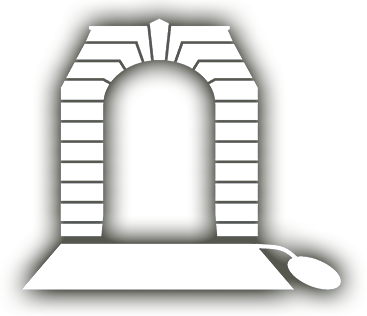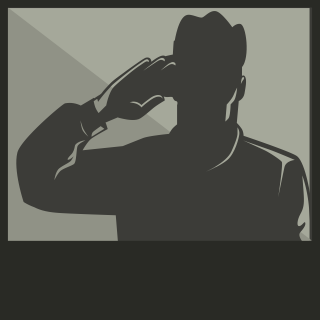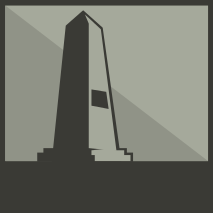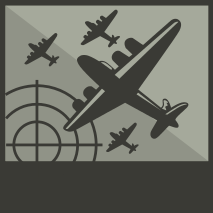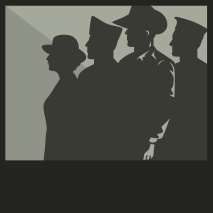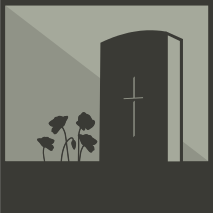Resources
Filter
Media
Type
Conflict
Campaign
Use quotes for more accurate searches - e.g., "2/10th infantry battalion"
Showing 50 of 4068 results
-
https://recordsearch.naa.gov.au/SearchNRetrieve/Interface/ViewImage.aspx?B=3400544
-
https://recordsearch.naa.gov.au/SearchNRetrieve/Interface/ViewImage.aspx?B=5338957
-
https://www.abc.net.au/news/2022-06-18/sydney-kinsman-wwii-veteran-rat-of-tobruk-death/101164278
-
https://www.dva.gov.au/newsroom/latest-news-veterans/vale-rat-tobruk-sydney-kinsman
-
-
https://www.findagrave.com/memorial/199087025/leslie-james-mills
-
https://recordsearch.naa.gov.au/SearchNRetrieve/Interface/ViewImage.aspx?B=4036601
-
https://www.findagrave.com/memorial/233993480/archibald-roland-walker
-
https://www.awm.gov.au/collection/R1958798
-
https://www.findagrave.com/memorial/159554504/ernest-irvin
-
https://trove.nla.gov.au/newspaper/article/55879494
-
https://trove.nla.gov.au/newspaper/article/47385505
-
https://trove.nla.gov.au/newspaper/article/209669089
-
https://www.findagrave.com/memorial/154087720/james-harvey-reseigh
-
https://aif.adfa.edu.au/showPerson?pid=252943
-
https://recordsearch.naa.gov.au/SearchNRetrieve/Interface/ViewImage.aspx?B=8029086
-
Pte_Leslie_Herbert_Lockwood_-_Yr_9_St_Francis_de_Sales_College.docx
-
-
-
https://www.findagrave.com/memorial/56206110/thomas-john-murrin
-
https://www.findagrave.com/memorial/153523863/frederick-neil-woodland
-
Group portrait of the original officers of the 10th Battalion, still in their variety of militia uniforms - barely any two are dressed exactly the same. Left to right, back row: Lieutenant (Lt) Julius August William Kayser (later Major, killed in action in France on 16 February 1917); Lieutenant (Lt) Clarence Rumball; Lt Louis Gordon Holmes; Lt Trevor Owen-Smyth (later killed in action at Gallipoli on 6 May 1915); Captain (Capt) Sydney Raymond Hall (later killed in action at Gallipoli on 25 April 1915); Lt John Hamilton (later Capt); Lt Alfred Cyril Sommerville; Second Lieutenant (2nd Lt) David Leslie Todd (later Capt); and Lt Albert John Bryne (later killed in action at Gallipoli on 25 April 1915). Middle row: Lt Mervyn James Herbert (later Major ); Lt Keith Eddowes Green (later killed in action at Gallipoli on 25 April 1915); Lt Robert James Mansfield Hooper (later killed in action at Gallipoli on 27 May 1915); Lt Eric John Carl Stopp; Lt Hector Roy Heming; Lt Eric Wilkes Talbot Smith, (later died of wounds in Egypt on 30 April 1915); Lt Herbert Champion Hosking; and Capt Harold William Hastings Seager (later Maj and awarded MC). Front row: Lt Eric James Sexton (later Maj); Capt George Dorricutt Shaw (later Maj); Maj Miles Fitzroy Beevor (later Lieutenant Colonel (Lt Col)); Capt Harry Carew Nott (Medical Officer) (later Lt Col); Maj Frederick William Hurcombe, Second in Charge (2IC later Lt Col and MID); Colonel Stanley Price Weir (Commanding Officer, later awarded DSO); Capt Francis Maxwell de Flayer Lorenzo (Adjutant later Lt Col and awarded DSO); Capt Charles Francis Minagall (Quartermaster, later Maj); Capt Edward Castle Oldham (later Maj and killed in action at Gallipoli on 25 April 1915); Capt Ross Blyth Jacob (later Lt Col); and Lt Vernon Hermann Robley Absent: Lt William Stanley Frayne, (later killed in action at Gallipoli on 6 August 1915); Lt Charles Percy Farrier (later killed in action at Gallipoli); Lt Felix Giles (later Lt Col); 2nd Lt Noel Medway Loutit (later Lt Col); Lt William Howard Perry (later Capt and awarded MC); and Captain George Ernest Redburg (later Maj).
-
https://recordsearch.naa.gov.au/SearchNRetrieve/Interface/ViewImage.aspx?B=3044009
-
-
https://recordsearch.naa.gov.au/SearchNRetrieve/Interface/ViewImage.aspx?B=4877198
-
https://nominal-rolls.dva.gov.au/veteran?id=120428&c=WW2
-
https://vwma.org.au/collections/home-page-stories/remembering-the-sandakan-prisoner-of-war-camp-and-death-marches
-
https://s3-ap-southeast-2.amazonaws.com/awm-media/collection/RCDIG1067567/large/5372807.JPG
-
https://vwma.org.au/cms-admin/sites/1/pages/513
-
-
-
-
http://nla.gov.au/nla.news-article134563729
-
-
https://aif.adfa.edu.au/showPerson?pid=202383
-
'On the 24th April 1918, North of CACHY near VILLERS BRETONNEUX, Private McLEAY was with a squad of Bearers with the 52nd Australian Infantry Battalion. In the confusion of the sudden move and attack the R.M.O. lost touch with the bearers, Private McLEAY on his own initiative, got in touch with the Regimental bearers on one hand and with the line of evacuation through the R.AP. of the 51st Australian Infantry Battalion on the other. It was owing to his coolness and judgment that the casualties were cleared from the Battalion from the beginning of the operation. There was considerable shell fire and direct Machine gun fire at the time.' Source: 'Commonwealth Gazette' No. 1 Date: 2 January 1919
-
https://nla.gov.au/nla.obj-136953102/view
-
https://trove.nla.gov.au/work/16506880
-
https://recordsearch.naa.gov.au/SearchNRetrieve/Interface/ViewImage.aspx?B=1953727
-
-
Bombala's Memorial TO THE BRAVE. UNVEILED BY THE HON. AUSTIN CHAPMAN, M.P. On Sunday last, in the presence of a large assemblage, the Hon. Austin Chapman, M.P., performed the official ceremony of unveiling the monument which the people of the Bombala district have erected to the memory of their soldiers who fell in the great war, and in honor of those who went forth to fight and returned to our shores. The monument is erected at the 'intersection*' of Maybe and Forbes streets. The base is of trachyte and on the top is the full sized figure of a soldier in full uniform. beautifully carved in Italian marble. On three sides are engraved the soldiers' names, and on the base is this inscription:- Erected by the Citizens of Bombala and District, in commemoration of the men who fell in the great war, 1914-18. — N. P. SMITH, Mayor, The Deputy-Mayor, Ald. N. F. Smith, presided, and he had with him on the -platform the Hon. Aus- tin Chapman, and the Revs. Mar shall (Presbyterian), Gibson (Meth odist) Sherris (Anglican), and Father Roche (R.C.) Ald. Smith apologised for the absence of the Mayor, who was away from the district. The Mayor had asked him to take his place, and he did so with pleasure, because it was always a pleasure for him to be with, and to do what he could for, the soldiers. They had met that day to unveil the memorial, a ceremony that should have taken place months ago, had it not been for the interference of Mr. Mutch, the Minister for Local Government, who refused them permission to erect it in a public place. They started to fight him, and after several months, with the assistance of Mr. Bailey, they got the necessary permission. This monument was not only, going to stand for a life time, it was going to stand for ever. When we were dead and gone this memorial would still stand as fresh and green as it was that day. It would remain ever green in the minds of the people of Bombala and district. When they read down the list of names and came to those (with a cross opposite to them, they could not but regret that those brave lads were not there with them, and they could only hope and pray that their souls were in that great kingdom where all was peace and happiness. And for those who are still with us never let us say or think that we are doing too much for them. They were the de- fenders of our country, and if we could ever do, anything for them it was our duty to do it. The Band then played the hymn, 'Nearer my God to Thee,' and the people joined in the singing. The Rev. W. H. Marshall offered a short prayer and delivered a short address. War, he said, had disturbed the world. and kept back its progress in literature, arts, in sciences, down through all the ages. Many wars were recorded in history, but the war they had to deal with was the great world war that commenced in 1914, when the German armies rose as one man, at the ap pointed hour, and invaded friendly and unprepared nations. The speak- er then briefly traced the course of events up to the time Australia came into the war, when hundreds of thousands of our men heard the call of the Motherland and respond- ed to it. These men came from all classes, and the rough bushmen and the cultured man of the town joined together. War had brought, them all to the one level. They trained for the conflict and embarked under sealed orders. Some went to German New Guinea, some to England, and others to Egypt. Those who went to Egypt had to land on a rough and rugged shore on the 25th April, 1915, expecting to drive the Turks back from Gallipoli and then march into Constantinople. They would have accomplished this but for the lack of reinforcements, and they had to retire after having fought some of the most glorious battles ever fought on a battlefield. From there they went to France. They received orders to break the Hindenberg line. This they did, driving the Germans back until they sued for peace. The armistice was granted, and afterwards peace was declared. These Australians were the sons of the pioneers who came to this almost unknown country, not in steamers, but in sailing boats, and faced terrible difficulties and dangers to establish their homes and rear their families. Sons born of such parents were the right men to effect the landing on Gallipoli. These were the men they were now doing honor to. This memorial was raised to their memory, and they were worthy of it and of their praise. The Rev. Father Roche said that this grand gathering of citizens, ir- respective of creed or nationality, was abundant testimony in itself of the patriotic spirit of Bombala, for all were anxious to associate them- selves with the solemn function of unveiling this splendid monument erected to perpetuate the memory of our fallen soldiers. The price of Nationhood must be paid in blood and tears, and there was no country ! that truly loved its flag which had not made the supreme sacrifice, and which had not freely offered up the lives of its best and bravest for a dream, for an ideal, for a solemn purpose. It was the good fortune of Australia to find her true soul in a great and glorious struggle to preserve the rights and liberties of smaller nations, and to crush a despotic militarism which would sub-' jugate, the rest of the world. The call came to Australia, and she, of her own free will, with a good heart, sent the cream of her Australian manhood into the battle fields of Europe. By their actions these brave Bombala lads, as well as men from all parts of the Commonwealth, proved themselves to be far-seeing men, because they realised that Australia's frontier was not washed by , the quiescent waters of the blue Pacific, but was situated somewhere in France. These brave Australian lads had won laurels for themselves, and had raised Australia to be among the nations of the earth; and to-day, while this grand memorial reminds us of the valor of our dead heroes, whose bodies lie in lonely graves on classic ground, it reminds us too, of the great part our Australian volunteers played in the world's gigantic struggle for liberty and justice, when Australians truly knew them- selves. Before our Australian heroes, astonished the watching nations our national sentiment in this young country was of a flabby and sprawling and flabby character. Thank God, the first memorable Anzac Day, with the heroic deeds accomplished by Australia's sons on the hills of Gallipoli, and the battle fields of France, had changed all that. The grand Australian flag had been brought from the garret and hoisted on a lofty tower in the full sight of its people. The war terminated— as was only to be expected — in a victory for the Allies, and Australia was at last a nation, with one heart, one soul, and one thrilling aspiration. 'l am a native-born priest," concluded Father Roche, and I am proud of it. My advice to all Australians is, to make this your motto, 'Australia and our grand Australian flag first,' and Australia will always be proud of you.” The public school children then sang the nationals song, "Anzac." The Rev. Gibson said they knew that war was abhorrent to the teaching of Jesus Christ. We could thank God that our nation had become so Christianised that war was abhorrent to us. Nearly eight years ago the Motherland was forced into the great war. Necessity knew no choice. It was ours to see that the necessity never again rose for, war in our land. They could thank God for the League of Nations, which, though crippled, in many ways, was the beginning of a universal peace. Thank God for the Washington Conference, and for the spirit that: prompted the holding of a Conference at Genoa. When the call came to our own land we found our man- hood ready to respond, and to-day we celebrated their baptism of blood. The 25th of April, 1915, was a glorious day; it was also a bloody day. For weary years this war continued, and then was manifested the truth of those words, "Never morning wears to evening but some heart does break." In those days never morning wore to evening but many hearts did break. The days brought nothing but watchfulness ; night brought no respite; the Sabbath brought no rest. Some spoke of the failure of Christianity in 1914. Did Christianity fail then? No! It had not been applied. When Christianity was truly ap- plied war could not exist. Suddenly the end came, but for many it came too late. Homes had been made desolate; hearts had been broken. And as we to-day honored those who had suffered in that great war, our sympathy must go out to those who suffered at home — whose hearts were broken. No honor could be too great for those who had gone never to return. Christ abhorred war but he left this message, "Greater love hath no man than this, that a man laid down his life for his friend." This message came to-day to the mother, the father, the sister, the brother, the sweetheart, the friend, who had found the great spirit of love in Christ. It was ours to cherish their memory, and, as the Chairman said, this memorial would keep their memory ever green. We should cherish their memory in the spirit of Christ by cultivating that spirit of love which was theirs. The Hon. Austin Chapman was then called upon to perform the un-veiling ceremony, and he commenced by calling for three cheers for the King and for the returned soldiers, which were heartily given. "We have to remember," he said, "that there would be no monument to un- veil, no happy crowd here to-day. but for those boys." They were told the Germans had prepared for this war for forty years. Our boys showed that they didn't want forty weeks. They played their part so well that they had made the name of Australia ring throughout the world. He remembered once he was touring at Mount Vesuvius, and the Cook's guide asked him where he came from ''Australia," he re- plied. "Austria?" said the guide. "No, Australia," said Mr. Chap- man. "I never heard of it," said the guide. Sir John Forrest, who was with them, turned to him and said, 'That takes the starch out of you." It did. That was all altered now, and they could go into any country and not be asked, "Where is Australia?" They knew where it was; they knew it was where our soldiers came from; they knew them as the best paid and the best fed soldiers in the war ; and it was said by the enemy that they, were the best fighters. This monument would be an everlasting reminder to us that we should try and do our duty as they had done theirs "Unity," should be our motto. We were all striving for the one goal, and we should put aside all class differences and creeds, as our men did at the War, and strive for unity. Our men taught us the lesson, and they showed us the answer to the question, "Why did God send war?'' One gentleman, said wars would cease. The Americans said, 'Trust in God, but keep your pow- der dry." This monument would help us to do that. The children who would take our place would see that monument and read the names on it, and if i necessary would go forth to uphold the reputation those men had made. The Chairman had said we should do everything possible for the soldiers. The speaker said enough had not been done — we could not do enough. 'What had we to thank them for? For every thing. If we had a German war lord to-day, where would we be? The Germans would have been our masters, and this would have been anything but the freest country on God's earth. While we looked after the Australian flag we must never forget the grand old Union Jack, but for which, there would have been a different state of affairs in the world, to-day. He had been called, a "Jingo," add he was proud of it. He was talking to a Ger man after the war, and said to him, "You should have beaten us early in the fight." He said, "We did, but you Britishers don't know when you are beaten." That was the British spirit, and he was proud of the British nation and the Union Jack. Mr. Chapman touched briefly on his visits to Bombala during the war, when he came here to start the "Men from Snowy River" from Delegate, and when he came later on to raise money for the war loans. On each occasion, he said, this district had responded nobly in men and money, There were many who for various reasons could not go to the front, and they did what they could here at home. The women of this country did greater service than the soldiers. Don't forget the Com forts Fund, when the women worked their fingers nearly off so that the lot of the soldier might be made a little easier. God. bless the women! If we could get a race of men equal to our women there would be no more war. Turning to the monument, Mr. Chapman said that after doing so well while the war was on, this dis- trict had now erected a monument at a cost of £500, which would be a credit to any city. He could say with pride and pleasure that there was none better than it. He admired the dogged pluck and per- severance of the Committee, which had enabled them to break through the red tape, and accomplish their object. Other districts, bigger and more prosperous than this, could not point to anything better nor even as good as this monument. It was a great pleasure to know that there were so many as 125 names on it of men, who had gone from this district. One-fifth of them would never come back; but while wc mourned for them, with our sorrow was mixed a pride that we did our share. In this respect, the Bombala District would compare with any other district in Australia. "In declaring this monument unveiled," said Mr. Chapman, "I have very great satisfaction indeed, for it is one that does you credit, and does credit to us all. It may have some equals, but no superiors. I, therefore, now declare the monument unveiled." Mr. Chapman then pulled the cord, and the flag which enveloped the figure fell away. The Rev. Sherris said he was delighted to hear the eloquent tribute Mr. Chapman had paid to the soldiers, and to the work of the women, which was done largely for the well-being of the soldiers? Every man in the A.I.F. would be gratified when he heard of the testimony to the work of those people who did their utmost at home to make his life smoother and more comfortable with the things they sent him. "We feel on Anzac Day," said Mr. Sherris, "that this day commemorates all the great things in the history of the war, from the landing at Gallipoli to the end." To his mind came things that could not come to the minds of those who had not witnessed the things take place, and he thought of the different types of men, and how each one did his utmost for the work he had in hand. With regard to, the statement that some of the returned men were not all that they should be, he could say that not many were bad returned men. Some were bad when they went away, and they were bad when they came back. Some of them never; were soldiers. They had no thought of fighting, and they didn't care for the .reputation of the other soldiers. The majority of the 400,000 were good men, and tried to do their best. It was up to the people to remember, the goodness of the majority, and not allow their goodness to be overshadowed by the faults of the few. He would, like to remind, them that what those men, had accomplished had meant a great deal to Australia, and it helped us to realise that Australia was a grown-up man— it was a nation now and no longer an infant. Australia had a place on the map. It got that as a result of the war. The Germans thought they would get a place in the sun, but they got a place in the shade. The men who went from here and fought in those glorious battles, helped to accomplish this. Among them were men who had by their deeds written their names at the very top, and had gained more distinctions for valor in this one war than members of the British forces who had fought in many wars. With regard to the honors distributed to soldiers, there was a distinction. The D.S.O. was awarded to officers, and the D.C.M. and M.M. to the men. The D.C.M. was as near to the V.C. as it was possible to get, and it was harder for the men to win a D.C.M. than for an officer to win a D.S.O. When a man won a D.C.M. or M.M. you could take it he had done some brave deed; and there were hundreds of them doing, likewise who re- received no medal. So when we thought of these things on Anzac Day it was up to us to remember oftener. It was not likely we would forget, but there was a difference between not forgetting and constantly remembering. The speaker also, referred to the destruction of social barriers that had taken place among the men at the war, and expressed the hope that many of them would be broken down in peace time, which would be better for the nation and for the Christian church, as they were no good, and when they were removed we would get on better in life. "I pay my tribute along with you;" said Mr. Sherris, to the returned men, and, thank God, there were men so noble that they gave their lives for their country." Mr. Arthur Beileiter sounded the "Last Post," . while all stood t to attention. Ald. Smith then thanked.' Mr. Chapman for his kindness in coming to unveil this memorial; the Rev- erend gentlemen who had assisted; the choir children; and the Band. Cheers were given for the King, the soldiers and the women, and a vote of thanks to the Chairman was carried by acclamation. The proceedings were brought to a close by the Band playing the National Anthem. The following is a list of the names which appear on the monu- ment :— Armstrong C. R. Badgery A. Bartley J. W. x Bedingfield S. Bedingfield Alf . Bedingfield A. Beileiter C. E. Beileiter A. E. Beileiter A. S. Beileiter C. L. Beileiter J. Bellchambers C. x Bellchambers. A. x Bellchambers H. Bonny S. Bonny F. P. Brassington M. Brassington P. x Brill J. x Brotherton H. Brotherton J. Brownlie W. Brownlie A. L. x Campbell D. Campbell A. H. Campbell J. C. Clark G. H. Collins M. x Conlon W. Cootes A. , Copeland N. Curtis W. x Davis A. G. Dawson M. Deeks F. J. Dent A. x Dent T. W. Douch R. Duncan A. Dunn C. Dunne J. Elliott R. Elliott H.J. Elliott A. Elton A. H. Elton J. R. Elton W.H. X Elton C. Forester G. Forsyth W. A. x Girvan R. R. C. Gleeson J. J. x Gleeson T. J. Greer A. J. x Haggar C. W. Hart H. E. Head E. J. Head G. W. Hedger F. x Helmers L. V. x Kellond J. H. Lancaster R. Langley D. B. Law Hawk C. x Lesleighter A. E. x Livingstone H. x Lyne V. H. May E. J. Marsh H. J. Margrie A. A. Miller J. x Morrison Jas. Morrison J. Morrison E. D. Morris R. x Murphy H. x Murphy R. Murphy W. x Maslin F. J. McLeod M. J. Mclntyre P. W. McAlister G. Nicholson W. Nicholson A, D. x Oliver R. V. Oliver J. I. Parkes J. Payne H. A. Perkins J. Phillips C. W. Pill S. J. Reed R. x Richter G. Robbie N. W. Robbie J. B. x Shields V. x Skipper- W. Skipper E. A. Skipper C. A. Sloan W. W. Sloan C. x Sloan R. A. x Smith C. Stewart R. E. Stutchbury G. Stutchbury C. W. Stutchbury R. Sullivan E. Toms E. Tracey C. Turner H. Trevanion C. Umback F. J. Walker J. G. Warburton W. A. Warburton J. x Watson P. x Way J. L. Whitehead G. Whitehead F. Whitehead A. Whiteley D. Whiteley J. Wiles R. J. Yelds S. D. Yeids W. x Denotes "Fallen."
-
https://recordsearch.naa.gov.au/SearchNRetrieve/Interface/ViewImage.aspx?B=4255170
-
https://aif.adfa.edu.au/showPerson?pid=125412
-
http://nla.gov.au/nla.news-article134585382
-
https://recordsearch.naa.gov.au/SearchNRetrieve/Interface/ViewImage.aspx?B=3070601
-
The Distinguished Service Cross was established by Act of Congress July 9, 1918 (amended by Act of July 25, 1963), 10 U.S.C. 3742. It is awarded to a person who, while serving in any capacity with the Army, distinguishes himself or herself by extraordinary heroism not justifying the award of a Medal of Honor while engaged in an action against an enemy of the United States; while engaged in military operations involving conflict with an opposing force, or while serving with friendly foreign forces engaged in an armed conflict against an opposing Armed Force in which the United States is not a belligerent party. The act or acts of heroism must have been so notable and have involved risk of life so extraordinary as to set the individual apart from his comrades.1 BRADY, Lieutenant Vincent John Joseph https://vwma.org.au/explore/people/157604 13th Australian Field Artillery Brigade, AIF CADDY, Sergeant Thomas Ernest https://vwma.org.au/explore/people/195256 43rd Australian Infantry Battalion, AIF ERRINGTON, Sergeant Arthur https://vwma.org.au/explore/people/378599 32nd Australian Infantry Battalion, AIF HILL, Lieutenant John Holroyd https://vwma.org.au/explore/people/169086 50th Australian Infantry Battalion, AIF MORISSET, Captain Vaux Liddiard https://vwma.org.au/explore/people/201762 31st Australian Infantry Battalion, AIF PADGETT, Lance-Corporal John Rush https://vwma.org.au/explore/people/368177 44th Australian Infantry Battalion, AIF PARKES, Private Thomas https://vwma.org.au/explore/people/322194 55th Australian Infantry Battalion, AIF RODAKIS, Sergeant Nicholas https://vwma.org.au/explore/people/164392 4th Australian Machine Gun Company, AIF TREWARN, Private Frederick https://vwma.org.au/explore/people/171715 5th Machine Gun Battalion, AIF 1 Title 32 - National Defense. Subtitle A - Department of Defense (Continued). Chapter V - Department Of The Army. Subchapter F - Personnel. Part 578 - Decorations, Medals, Ribbons, And Similar Devices. - General.
-
https://recordsearch.naa.gov.au/SearchNRetrieve/Interface/ViewImage.aspx?B=4582331
-
https://nominal-rolls.dva.gov.au/veteran?id=1045897&c=WW2#R
-
https://nominal-rolls.dva.gov.au/veteran?id=892101&c=WW2#R
-
https://nominal-rolls.dva.gov.au/veteran?id=1066328&c=WW2#R
Page 5 of 82
This page is supported by a grant from the ANZAC Day Commemoration Council

